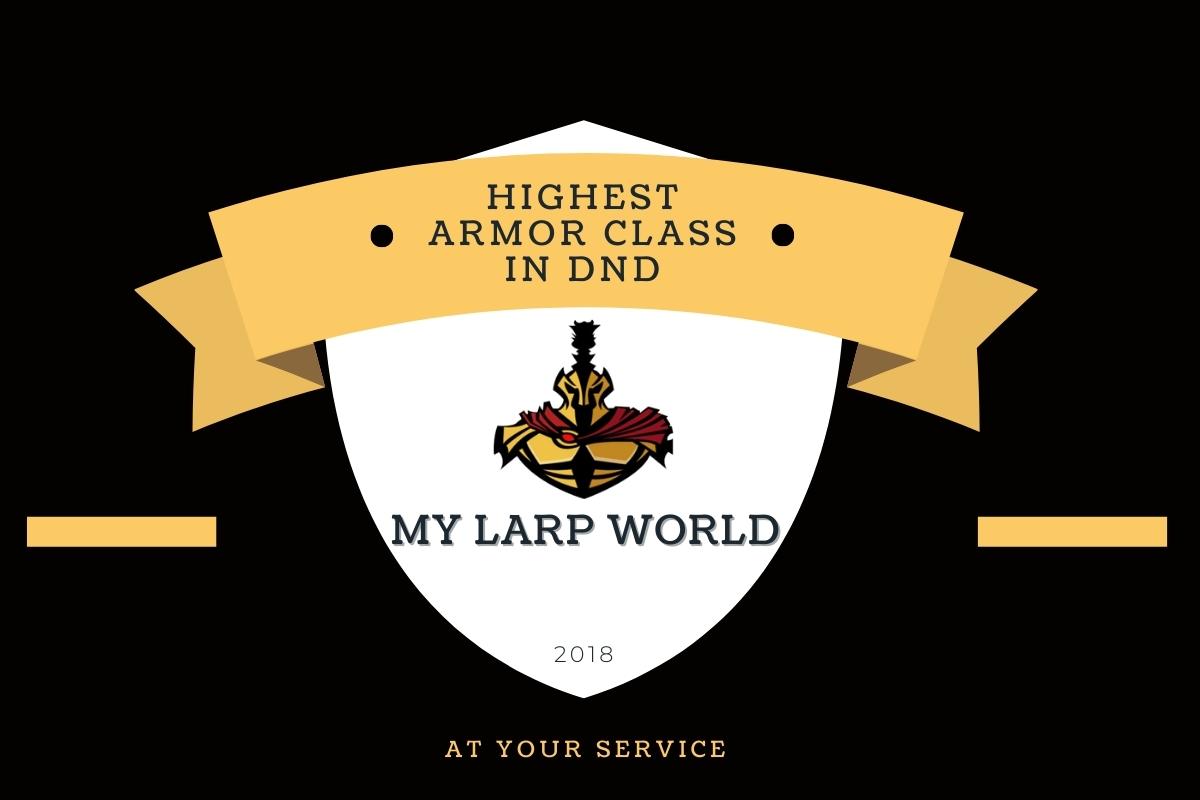Armor Class, or AC, is a way of illustrating the defense of a character in DnD. DnD does not exactly present in a way where new players can understand it immediately, which is fine. When you have learned this concept, you will appreciate it! I would recommend picking up the Player’s Handbook to understand this concept fully.
That is why I’ve decided to make an article about armor classes in DnD. More specifically, what is the highest class of AC in DnD?
The highest armor class (AC) you can have in DnD is around 30. However, this is in theory. Remember that not many players will actually achieve this number. An armor class of 30 practically requires your character to be level 20, and reaching level 20 can, depending on house rules and such things, take a very long time.
Now that you know what the highest AC in DnD is, let’s continue to explore topics surrounding AC. Keep reading to discover the different armor classes, how you typically increase your AC, and much more. When you have read this article, hopefully, you will have a greater understanding of what AC is in DnD.
What Is The Highest Armor Class In DnD?

Let’s go over some details regarding the highest armor class in DnD. Now, the player’s AC isn’t “capped”, meaning there isn’t any set limit where characters can’t go any higher.
However, many DMs won’t allow players to exceed a specific limit. It is possible to achieve around 25 AC (not quite) as early as level 4, but many DMs wouldn’t allow this, simply because it’s too hard to hit a character with that high AC.
The Tarrasque, widely considered the most fearsome monster in all of DnD, has an AC of 25. This might give you an idea of tanky such high AC is.
Depending on what class you are, you get AC depending on different stats: for example, Monks get base AC depending on dexterity and wisdom, while Barbarians get AC depending on constitution and dexterity.
So remember, AC is not simply high armor so that you can absorb point-blank hits to your face easier. High AC can also mean that a character is very hard to hit due to its evasiveness, for example. AC is a fairly abstract concept in this sense, but that’s why high AC can be modified using different stats as I went through earlier.
There are also a bunch of different items and buffs that can get you higher AC than you would normally have.
What Are The Armor Classes In DnD?

Armor classes include three different types: light, medium, and heavy armor. To wear the respective types in an effective manner, you need to have proficiency in them. For example, to wear light armor, you need light armor proficiency.
Light armor types include leather gear of different kinds. There aren’t any other requirements to wearing light armor than having the basic light armor proficiency. Light armor does not restrict your dexterity modifier in any way (a higher dexterity modifier increases your natural AC).
Light armors do not give any sort of disadvantage when it comes to stealth rolls, which is cool. This means that light armor should be worn by classes such as the Rogue.
Medium armor types include different types of armor, such as mail, half-plate, hides, and so forth. It provides higher AC than light armor generally, but it also limits your dexterity modifier (to +2).
Heavy armor types include plate gear, ring mail, chain mail, and splint. Now, heavy armor works differently than medium and light armor. Heavy armor does not scale with dexterity, but it gives a flat value. This flat value is usually very high in comparison to the value of medium or light armor.
The idea of the armor classes is that while heavier armor gives you more pure bulk and resistance, it impedes your movement, which impedes your ability to dodge attacks and skills. In turn, your dexterity modifier gets penalized to illustrate this.
It’s actually kind of genius. Meanwhile, light armor gives you lower AC, but lets you use the dexterity modifier to illustrate that your character can dodge attacks and skills more easily.
You might also like: The 5 Least Played Races In DnD
Does Armor Class Increase With Level?
No, leveling does not increase your AC. Not automatically, anyway. Leveling can obviously unlock new abilities and tools to make your AC go up, however. Plus, if you spec into dexterity when leveling your AC might go up as a result of the dexterity modifier increasing.
As I mentioned, AC is not naturally scaled with leveling. This means, however, that you can get a lot of AC very early since it is not capped by levels.
How Is AC Calculated?
First of all, you can find very detailed information about this in the Player’s Handbook, which is available pretty cheap nowadays. I’d recommend you get that book as it is an amazing resource. Now, let’s get to it.
If you have no armor, take 10 as a starting-off point, and then add your dexterity modifier to that. If you are a Monk, also add your wisdom modifier. If you are a Barbarian, also add your constitution modifier. The result of this is your base armor class, unarmored.
Now, if you have armor on, check what your AC value is. For example, if you’re wearing leather armor, take your dexterity modifier plus 11. 11 being the value of AC for the leather armor.
For medium armor, if your dexterity modifier is 1 or less, take your dexterity modifier plus the armor value of your gear. If your dexterity modifier is 2 or more, take 2 plus the armor value of your gear.
Heavy armor adds flat values. Heavy armor includes ring mail (14 AC), chain mail (16 AC), splint armor (17 AC), and plate armor (18 AC).
You might also like: How To Calculate Your Character Health In DnD
What Is Natural Armor In DnD 5e?

Natural armor is most common with monsters you face while adventuring, but some playable races have this as well. It basically means that some creatures have additional AC because of things like a thick hide, scales, and so forth.
DnD’s way of illustrating this is adding natural armor! I think it’s a great concept, it’d be strange if a massive dragon with thick scales didn’t get some sort of bonus defensively. Now, some playable races also have natural armor.
These races include Lizardfolk, Tortles, Locatha, and Luxodon. As you might know, these are all races that are bestial in nature.
What Classes Can Wear Armor In DnD 5e?
Every class in DnD except the Sorcerer, Monk, and Wizard has light armor proficiency at level one (check the sections above to read about light armor proficiency). The reason for this has to do with the flavors of the class, and they have many other benefits to make up for the lack of light armor proficiency.
So, how can these classes get armor? Do they just run around nude for the entirety of your campaign? Well, no, not really. Light armor proficiency can be unlocked in multiple ways. For example, you can choose to be a Dwarf.
Dwarves have some armor proficiencies as a racial ability, which is neat. You can then choose to be a Dwarven Monk and still have armor.
Another way of unlocking light armor proficiency for your Monk, Sorcerer, or Wizard is by doing feats. You can spend feats to unlock armor proficiencies, although you can only unlock them in stages. For example, you cannot unlock heavy armor proficiency if you have no armor proficiency, you need to have medium armor proficiency to do this.
The last way of getting armor proficiencies in DnD is to multiclass. Multiclassing is picking another class to spend a point in when you level up.

